“In 2025, 91% of individuals who took a two-week break from their smartphones reported improved mental health, better subjective well-being, and enhanced sustained attention.”
— NPR, February 2025
These statistics serve as a wake-up call to the digital world, which has become our constant companion.
Aren’t you perpetually plugged in, as though you’re no different from the devices you carry?
Why does every buzz, every ping, from the endless tide of notifications, emails, and social media updates feel so urgent, so essential?
It’s the algorithms—those unseen architects of the digital world—training your mind to be tethered to screens, leaving you drained, unfocused, and yearning for deeper, more meaningful connections. Ironically, you’re reading these words on the very screen we urge you to step away from, if only for a while.
If you’ve ever wished for a pause button to disconnect and reclaim your time, you’ve found the right place.
Studies suggest that unwiring, unplugging, and unwinding can transform your lifestyle for the better.
So, how do you achieve it?
“Quick tip before you scroll: turn on night mode — your eyes will thank you.”
This series is your guide to breaking free from digital fatigue and embracing the art of living unplugged. With practical advice, inspiring insights, and actionable steps, it helps you rediscover the beauty of being fully present.
Divided into three interconnected articles, it leads you on a mindful journey toward a more fulfilling life:
Step-1: Scroll. Swipe. Repeat. — The Wake-Up Call from Digital Overload
Endless scrolling, swiping, repeating… the silent drain of constant connection. Learn to recognize the subtle signs before burnout claims its toll.
Step-2: Unplug, Unwind, Uplift — Crafting Your Tech-Free Retreat
A gentle guide to unplugging, recharging, and weaving your own sanctuary of stillness, away from the digital noise.
Step-3: The Return to Real — Living Mindfully Beyond the Screen
Simple ways to weave unplugged living and mindfulness into your daily life, creating sanctuaries of peace, nurturing creativity, and fostering deeper connections in a digital world.
Join the Journey
Begin with Step -1: Scroll. Swipe. Repeat. — The Wake-Up Call from Digital Overload, and take the first step toward a quieter, richer life. Unplug. Embrace what’s real. Rediscover the joy of simply being.
Let’s begin.
🌿 If these words felt like a pause you needed, let them travel gently. Share them with someone who might be craving a moment of calm — like handing them a warm cup of quiet.
Continue reading ⤵
Step-1
Scroll. Swipe. Repeat. — The Wake-Up Call from Digital Overload
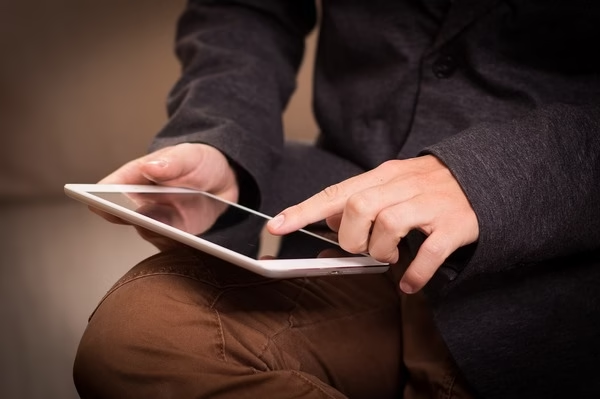
“Scroll. Swipe. Repeat — and somewhere in between, we forget to live.”
A morning ritual is now a norm for all—a full glow screen with notifications that makes you feel so important, as if the world is helpless without you. Is it?
The day begins with all the urgent tasks of the world assigned to you. From morning bedtime till night bedtime, your little companion is always there in your reach, making you feel you are never alone. Some people take to step further, they won’t even miss a call—even when nature calls
This is where the endless loop begins-
Scroll. Swipe. Repeat.
Sound familiar?
Step #1 invites you to pause—to feel the quiet weight of endless scrolling and pings that steal your focus and blur your peace.
Many fail to find balance, not from lack of effort, but from not seeing the truth: to change, you must first understand the digital grip you’re in.
The Modern Digital Landscape – “Continuous Partial Attention”

“Continuous partial attention: always alert, never fully alive.”
While you are busy chasing news alerts, emails, social media posts, it strains your cognitive resources, that can lead to fatigue, anxiety, and even sleep disturbances. This continuous influx of data keeps your brain in a state of perpetual alertness. This phenomenon is described as “continuous partial attention.”
Research shows that our brains are not designed to process information at this relentless pace. Studies also indicate that constant interruptions can reduce our ability to engage in deep, focused thought. The irony is that while technology is supposed to sort our lives, it often leaves us feeling scattered and stressed.
The Hidden Costs of Constant Connectivity – The Digital Glow That Blinds
“Connected we are, yet far from the soul,
The digital glow takes its toll.”

You might have experienced that quiet joy of completing a task with your full attention,
a sense of calm, of something well done.
And then, the opposite — those scattered days,
where many tasks began but none felt whole.
It’s because when your mind is repeatedly bombarded with notifications, it struggles to prioritize what’s truly important.
Energy is drained not by doing,
but by switching — again and again —
until focus fades and fulfillment slips away.
Let’s delve into the multifaceted consequences of constant connectivity.
1. Mind in the Maelstrom: Navigating the Storm of Digital Overload
The relentless flood of information and notifications keeps you tethered, leaving little room for rest or reflection. Over time, this storm wears us down, pushing our mental resilience to the brink.
Here are the listed mental challenges.
(A) The Stress of Being “Always On” – “Always available”
Constant availability leads to digital overstimulation, triggering a sustained cortisol response, the body’s main stress hormone. Studies show that frequent digital interruptions, especially notifications, contribute to anxiety and mental fatigue. While machines get downtime, your brain struggles to reset, and the consequences are well-known—and likely familiar.
(B)Sleep Disruptions: The Blue Light Effect:
We all know how tempting it is to scroll through our phones right before bed, but this habit comes with a cost. The blue light emitted by screens messes with your body’s natural sleep cycle by blocking the production of melatonin, the hormone that helps us fall asleep.
Excessive screen time before bed can lead to poor sleep and insomnia, creating a vicious cycle that leaves you drained the next day.
(C) Digital Addiction: The Dopamine Trap
Mindlessly scrolling on social media is driven by dopamine, the brain’s “feel-good” chemical. Likes, comments, and notifications trigger dopamine, creating a cycle of digital addiction that’s hard to escape.
Let’s understand what happens to the cognitive abilities.
2. Cognitive Clutter: The Mental Toll of Constant Connectivity
“Endless pings, endless thoughts — clarity gets lost in the scroll.”
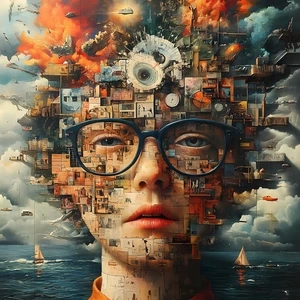
Reduced Attention Span:
Today’s generation struggles with focus due to constant multitasking and digital distractions, as noted by PsychUniverse . This fragmented attention likely explains the rise of short-form content like reels on social media.
Decreased Productivity:
While businesses aim for high productivity, employees are facing cognitive clutter from constant digital connections, leading to more errors and decreased efficiency, as noted by Village Counseling. Though the same technology if used with proper techniques can reverse the situation.
Impaired Decision-Making:
Constant connectivity overloads our cognitive processes, leading to indecision and reduced problem-solving, as stated by Verywell Health.
Not only mind and cognitive abilities, but there are social impacts too. Hope you got till here without losing focus.
3. Disconnected Connections: The Social Cost of Digital Immersion
“Real voices fade as virtual ones grow louder.”
Emotional Exhaustion:
Emotions are what make us human and that too is under threat of digital connections. With emojis increasingly becoming the method to convey emotions. The pressure to remain constantly available online contributes to emotional fatigue and burnout. Needless to mention what may come to life after that – Depression.
So, how would you recognize the digital overload? Let’s understand it.
Recognizing the Need for a Digital Detox
“Scroll less, feel more —
There’s a world outside your digital door.”
Possibly not only you but everyone around you might be trapped in this vicious cycle of constant connectivity. The digital addiction is such that before you even acknowledge the challenge, you have already spent hours on it.
But if you pay attention, there are signs that can help you recognize the need for a digital detox.
Here are some signs it might be time for you to get detox:
- Constant Fatigue:
If you are always feel tired despite a full night’s sleep, digital overload could be affecting your rest.
Ask yourself a question:
“Am I really tired because of work I completed, or is its because of distractions during the work?”
- Poor Focus:
Your inability to concentrate on tasks for at least 25 minutes in one session without being interrupted indicates your brain is overstimulated. Next is burn out.
- Increased Stress:
Frequent feelings of anxiety or irritability without a reason or background often stem from too much digital input. Needless to say, you have overexposed yourself to screens.
Analyze your feelings and answer:
“Am I anxious in situations that can be easily handled?”
- Disconnect in Relationships:
If your interactions with others feel shallow or strained or you feel like you are usually not interested in the conversations face-to-face, it may be the impact of screen-mediated communication, where emojis have replaced the actual emotions.
Ask yourself:
When was the last time you had a meaningful and emotional conversation with someone dear?
Transition to the Next Step
Now that you’ve recognized the wake-up call of digital overload, take a moment to let that realization settle in. Allow the need for change to infuse you with clarity, so you begin to truly absorb the call for disconnection.
Now, it’s time to translate that inner awareness into external action. It’s time to channel that energy into carving out your personal sanctuary. Leave behind the clamor of endless feeds and notifications, and begin forging a refuge of calm.
Welcome to Step 2: Unplug, Unwind, Uplift — Crafting Your Tech-Free Retreat. Here, you’ll design a space where you can truly disconnect and nurture inner calm.
Click here
Step 2: Unplug, Unwind, Uplift — Crafting Your Tech-Free Retreat.





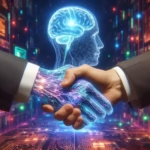









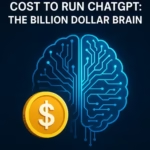


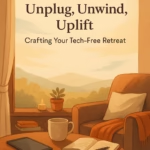

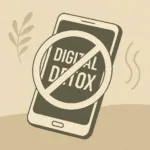







Leave a Reply